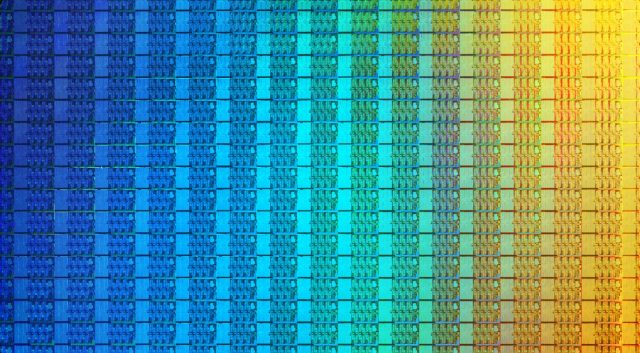Intel has unveiled its Coffee Lake-S Core i7 8700K. It is in response to AMD’s Ryzen 7 processors.
The Coffee Lake-S Core i7 desktop processor is ahead, having six cores and high frequencies than AMD’s Ryzen 7 processors. This processor overtakes Ryzen in its performance , gaming experience and provides plenty of room for overclocking.
The Core i7 8700K processor comes with 6 cores, which is two cores less than its rivals. It goes way ahead with a higher base of 3.7GHz and a boost frequency of 4.7GHz. Earlier, Intel had four core processors within its high-end desktop and X-series range. It is a great boost for them, now that they have come out with the hexa-core mainstream processor.
Price
The Intel Core i7 8700K processor comes at a price of $359 which takes on AMD’s best Ryzen 7 processors that include $399 for the 1700X and $499 for 1800X. Intel’s present six-core i7 7800X Skylake-X CPU comes at a price of $379. This is close in price to that of the Core i7 8700K Coffee Lake-S CPU, but the X299 motherboards are costlier than the new Z370 standard. If you are planning to go for the Core i7 8700K processor, you will definitely need to get a new motherboard as the previous Z270 platforms do not support the high power delivery demands of the latest technology.
Features
As compared to the Kaby Lake, the Intel Core i7 8700K has two more cores, but the processor package remains the same. The only handicap, is that with this advancement of CPUs, one needs to buy a new motherboard.
The Z370 platform does not vary much from the Z270. There is support for a dual-channel memory. Out of the 40 PCle lanes available, only 16 are connected to the CPU. The balance 24 PCLe lanes share a single DMI 3.0 connection to the CPU. Thus you can get the best of the two graphic cards or one GPU and two M.2 NVMe SSDs.
There is a benefit though, that the Z370 can support DDR4 2,666MHz memory as compared to 2,400 MHz frequency seen on Z270. Thus, there is improvement in power delivery for overclocking on a mainstream processor.
With a core count increase, there is not much increase in power consumption. When idle, the hexa-core CPU consumes electricity at an average of five-watts. It is far less than the 12-watts taken up by AMD 1700X.
On the other hand, the Intel Core i7 8700K takes up more current and goes beyond its maximum frequency of 4.7GHz. On raising the frequency to 5.1GHz by providing extra volts, the Intel Core i7 8700K did not show any significant detrimental effects and there was not much rise in temperature and power consumption. But on raising it to 5.2GHz, it became unstable and even Windows 10 could not be loaded properly. All set and done, in the 8700K, there was not much of extra heat or power demands due to overclocking.
Performance
It is high above in performance as compared to the standard set by Ryzen in March this year. The chip of Intel’s Core i7 8700K overtook AMD’s Ryzen 7 1700X in Geekbench 4 by extension. All the processing power seen in 8700K helps to convert videos as fast as other overpowered CPUs. In gaming, there is not much improvement as compared to the i7 7700K, but there was great improvement in titles running at Full HD and UHD settings. This shiny hexa-core Intel processor increased frame rates across the board.
Overview
The Intel Core i7 8700K is top notch in the processor domain. It has a slight edge in gaming performance. Its high threading performance puts it high above all the processors and even at par with some high-end desktop parts. The only annoyance for its users is to get a new motherboard.

 Why Your Link Building Efforts Might Fail
Why Your Link Building Efforts Might Fail  How to Request or Give Remote Control in a FaceTime Call on iPhone
How to Request or Give Remote Control in a FaceTime Call on iPhone  The Rise of Intelligent Automation in Business Operations
The Rise of Intelligent Automation in Business Operations  The Best Ideas for Designing Your Custom Printed Ring Binder
The Best Ideas for Designing Your Custom Printed Ring Binder  How Technology is Changing the Way We Play Hearts
How Technology is Changing the Way We Play Hearts  The Rise of Open Source: A Journey to Innovation and Collaboration
The Rise of Open Source: A Journey to Innovation and Collaboration  How SD-WAN Is Revolutionizing Business Networks
How SD-WAN Is Revolutionizing Business Networks  Effective Digital Advertising Strategies for Modern Businesses
Effective Digital Advertising Strategies for Modern Businesses  Tips for Marketing Dental Packages: Easy Ways to Grow Your Reach
Tips for Marketing Dental Packages: Easy Ways to Grow Your Reach 